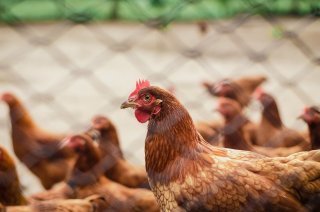
category_news
Revised EU Guidance document officially published
The European Commission has published a revised Guidance document on the EC website, providing more detailed information and practical examples on the scope and user obligations of the EU ABS Regulation (Regulation (EU) 511/2014).
Although the previously published Guidance document provided much information on the EU ABS Regulation for users of genetic resources, more specific guidance was requested, especially further specification of the concept of ‘utilisation’. In close consultation with stakeholders from different sectors and ABS experts from the EU Member States, the European Commission has drafted and adopted a revised Guidance document to clarify when an activity with genetic resources falls in scope of the EU ABS Regulation.
Annex II: specific guidance on utilisation
An all-new section is Annex II, which provides specific guidance on when genetic resources are considered to be utilised in the meaning of the EU ABS Regulation, assuming they fall in the temporal, geographical and material scopes of the Regulation.
Annex II follows the logic of the value chain as closely as possible, starting from acquisition, via storing, management of collections, identification and characterisation, and finishing with product development, product testing and placing of a product on a market. Examples (cases) are drawn from different sectors and often rely on feedback from stakeholders that identified issues and challenges in interpretation of the Regulation.
New content in the Guidance
Both the updated Guidance and Annex II provide new information on the scope of the EU ABS Regulation. New sections of the Guidance are listed below.
Chapter 2. Scope of the Regulation
- Alien and invasive alien species (2.1.4.).
- Provider country of released biocontrol organisms (2.1.5.).
- The material scope of genetic resources (2.3.1.), including pathogenic genetic resources and pests introduced unintentionally in the EU (2.3.1.5.), associated organisms on an accessed genetic resource (2.3.1.6.) and human microbiota (2.3.1.7.).
- Research and development – identification (2.3.3.1.).
- Derivatives of genetic resources (2.3.4.).
Chapter 3. User obligations
- When it is not possible to identify the provider country (3.3.).
- Carrying out regulatory tasks (3.4.).
- Responsibilities of research institutions and of researchers employed (3.5.1.).
- Responsibilities of service requestors and service providers (3.5.2.).
Chapter 5. Selected sector-specific issues
- Different scenarios concerning plant genetic resources - Examples (5.2.1.).
Contents of Annex II
Since Annex II is completely new, an overview of the topics has been listed below.
- Acquisition of genetic resources (Chapter 2).
- Storage and collection management (Chapter 3).
- Rearing and multiplication (Chapter 4).
- Exchange and transfer of genetic resources (Chapter 5).
- Identification of organisms and other activities at the beginning of the value chain (Chapter 6), including taxonomic identification and research (6.1.), characterisation (6.2.) and large-scale screening (6.5.).
- Genetic resources as tools (Chapter 7), including testing or reference tools (7.1.) and laboratory strains (7.5.).
- Breeding of genetic resources (Chapter 8), including commercial plant varieties (UPOV-registered varieties, 8.4.) and animal breeding (8.6.).
- Product development, processing and product formulation (Chapter 9).
- Product testing (Chapter 10).
- Marketing and application (Chapter 11).
Find the revised Guidance document on the ABS Focal Point page EU Regulation 511/2014 or download it here: EU Guidance.
